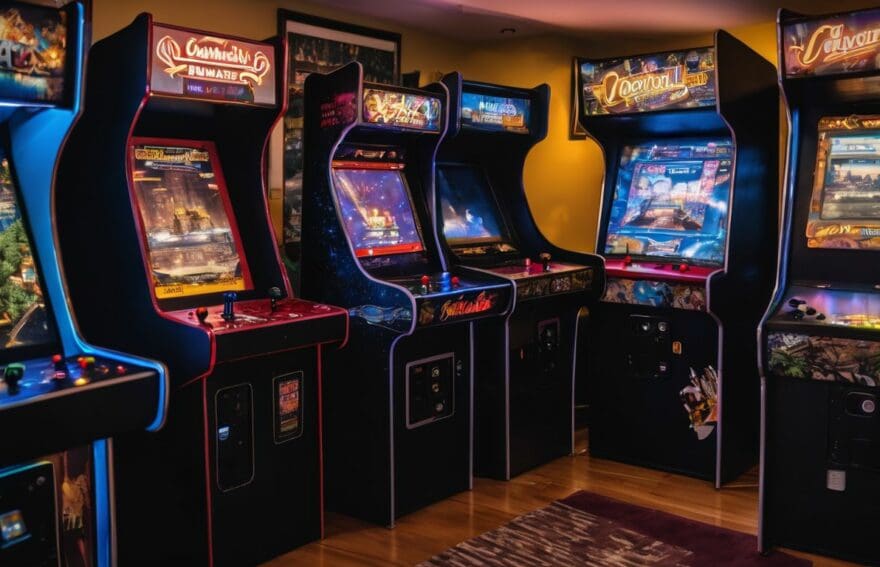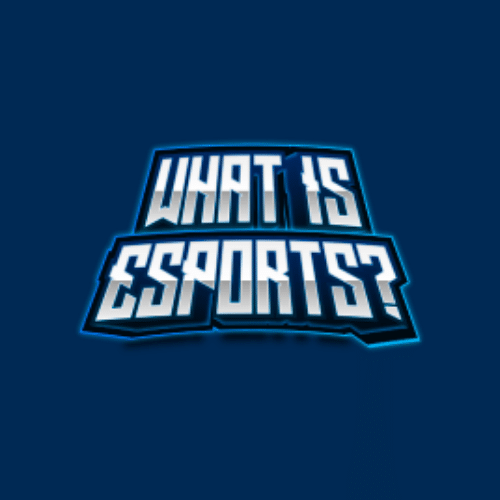The History of the FGC: From Arcade Cabinets to Online Arenas

Updated On: November 29, 2025 by 
Have you ever found yourself musing over the evolution of fighting games—from the humble beginnings amidst the enthusiastic chirps of local arcade machines to its current grandeur on a worldwide stage? You’re certainly not on your own.
We, too, have shared in this fascination, eagerly peeling back the layers to discover how key moments have carved out such a vibrant community. In our thorough exploration into the history of the Fighting Game Community (FGC), we shall traverse from those hefty old arcade cabinets to today’s polished online platforms that captivate audiences by their millions with enthralling confrontations.
Brace yourself for a reminiscence-fuelled jaunt down memory lane that promises to be as invigorating as it is heartfelt!
The Birth of the Fighting Game Community
The early history of arcade fighting games is a fascinating journey that paved the way for the birth of the Fighting Game Community. The rise in popularity during the 1980s and 1990s laid the foundation for what would become a vibrant and passionate gaming subculture.
Early history of arcade fighting games
Back in the day, we’d flock to local arcades, 10 pence pieces in hand, ready for battle. These buzzing havens were where many of us cut our teeth on the earliest fighting games. Iconic cabinets like ‘Street Fighter’ and ‘Mortal Kombat’ weren’t just games; they were proving grounds where we honed our skills against fierce opponents.
It was here that blocks, combos, and special moves became second nature as we pushed ourselves to outmanoeuvre and outplay the person standing next to us.
Arcade culture forged a tight-knit community, bringing together gamers from all walks of life to share tips, strategies and bond over shared challenges. A spirit of friendly rivalry filled these spaces with energy and excitement that you couldn’t find anywhere else.
As fighting game popularity exploded during gaming’s golden age, these bustling arcades served not only as battlegrounds but also as social hubs where friendships were formed and rivalries began – roots that continue to shape FGC tournaments today.
Rise in popularity during the 1980s and 1990s
During the 1980s and 1990s, fighting games gained immense popularity within the gaming community. Gamers flocked to arcade venues, such as New York’s renowned Next Level arcade, to compete in titles like Street Fighter and Mortal Kombat.
The arcade scene was buzzing with excitement as players honed their skills and engaged in fierce one-on-one battles. This era marked the formation of what would later become known as the Fighting Game Community (FGC), laying the foundation for its vibrant culture and passionate player base.
Amidst this surge in popularity, hip-hop music also played a significant role in shaping the FGC’s identity, with its energetic beats providing an electrifying backdrop to arcade showdowns.
As competitive gaming continued to grow, arcades became essential hubs where gamers could immerse themselves fully in the thrill of intense virtual combat. The shared experience of gathering at these local hotspots solidified friendships among players who shared a mutual love for challenging each other on classic fighting game titles.
As technology continued to advance rapidly during this period – both within arcades and home video game systems like Sega’s Saturn console – it paved the way for a new chapter in gaming history that promised even more innovation and excitement.
Evolution of Fighting Games in the FGC
Arcade fighting games have come a long way since their early days, with technological advancements in arcade cabinets allowing for more complex gameplay and visuals. The transition to online arenas has also expanded the reach of fighting games, making them accessible to a global audience.
Technological advancements in arcade cabinets
Technological advancements revolutionised arcade cabinets, enhancing gaming experiences. Upgraded hardware led to improved graphics and sound quality, attracting more players to local arcades.
Innovations like expandable memory also allowed for larger game files, enabling the introduction of more complex characters and moves within fighting games.
Developers integrated new control mechanisms into arcade cabinets, paving the way for enhanced gameplay experiences. The utilisation of digital joysticks and ergonomic button layouts improved player interaction and precision during intense battles.
Transition to online arenas
As the FGC embraced technological advancements in arcade cabinets, it also made a significant transition to online arenas. This shift revolutionised the way fighting games were played and competed in.
Online gaming allowed players from different parts of the world to challenge each other, paving the way for a more diverse and competitive landscape. With the rise of online platforms and streaming services like Twitch, the FGC not only expanded its reach but also garnered a wider audience base.
Esports became an integral part of the FGC, drawing in larger numbers of viewers than ever before. Tournaments shifted from being solely based in arcades or local venues to massive global events with participants joining remotely.
Major Players in the FGC
From iconic titles like Street Fighter and Mortal Kombat to rising stars like Tekken and Super Smash Bros, the fighting game community has a rich history of popular games. Notable players and teams have emerged as champions in these competitive arenas, contributing to the evolution of the FGC.
Popular fighting game titles
The FGC boasts a wide array of popular fighting game titles that have left a lasting impact on the gaming community. These games have not only shaped the evolution of the genre but also contributed to the growth and success of competitive gaming. Here are some standout titles revered by passionate gamers and novice gamers alike:
- Street Fighter Series: A cornerstone in the fighting game genre, Street Fighter has been instrumental in shaping competitive gaming since its inception.
- Mortal Kombat Series: Known for its signature fatalities, this franchise has garnered a dedicated fan base and remains a staple in fighting game tournaments.
- Super Smash Bros. Series: With its unique blend of characters from various gaming universes, Super Smash Bros. has carved out its own niche in the FGC.
- Tekken Series: Renowned for its deep fighting mechanics and diverse character roster, Tekken continues to be celebrated in both casual and competitive circles.
- Dragon Ball FighterZ: Drawing inspiration from the iconic anime series, this title has captivated fans with its visually stunning battles and faithful representation of beloved characters.
Notable players and teams
- Daigo Umehara – Known for his legendary parry in Street Fighter III: 3rd Strike, Daigo is an iconic figure in the FGC, revered for his exceptional skill and strategic playstyle.
- Justin Wong – A prolific player across multiple fighting game titles, Justin has consistently showcased his versatility and adaptability in high-stakes tournaments.
- Echo Fox – As a prominent esports organisation within the FGC, Echo Fox has sponsored top-tier players and invested in the competitive growth of the community.
- Team Liquid – With a strong presence in various esports scenes, Team Liquid has fielded talented FGC players who have achieved significant success at major tournaments.
- Tokido – Hailing from Japan, Tokido’s mastery of multiple fighting games and his mental fortitude during intense matches have solidified his status as a top competitor.
- Panda Global – This esports team has supported notable FGC talents while also prioritising community engagement and advocacy for diversity within the gaming space.
- SonicFox – Widely regarded as one of the greatest fighting game players, SonicFox’s exceptional performance across different titles has earned them widespread acclaim.
Impact of the FGC in Esports
The FGC has had a significant impact on the growth of competitive gaming, with fighting game tournaments drawing in large Twitch viewership and attracting a diverse audience. These events have become major spectacles in the world of esports, showcasing the skill and entertainment value of the FGC.
The growth of competitive gaming
Competitive gaming has seen remarkable growth, with the FGC playing a significant role in this evolution. Video game tournaments, such as EVO and Capcom Cup, attract thousands of participants and massive Twitch viewership.
The rise of competitive gaming has also fostered a closer relationship between the hip-hop community and the FGC, adding to the excitement and energy surrounding these events.
Gaming tournaments are not limited to just one location; they take place across different countries, bringing together players from diverse backgrounds. The FGC’s commitment to inclusivity has made these events more accessible than ever before, attracting both seasoned veterans and new players alike.
Tournaments and events
The FGC hosts numerous tournaments and events, showcasing the competitive spirit and camaraderie of the community. These gatherings bring together players from all over the world to test their skills in a variety of fighting games.
- International Majors: These large-scale tournaments attract top players from different countries, providing a platform for intense competition and the chance to witness high-level gameplay.
- Regional Championships: Regional events offer local players the opportunity to compete against their peers, fostering a sense of community and friendly rivalry within specific gaming circuits.
- Community-run Events: Grassroots tournaments organised by FGC members create inclusive spaces for gamers of all skill levels, emphasising fun-filled competition and social interaction.
- Professional Leagues: Established leagues feature regular seasons and playoffs, elevating the competitive nature of fighting game esports with consistent high-stakes matches.
- Exhibition Matches: Special events often include exhibition matches between prominent players, delivering entertaining showdowns that captivate audiences with exciting gameplay and strategies.
- Online Tournaments: With the rise of online gaming, virtual tournaments allow players to participate in competitions from anywhere in the world, expanding the reach and accessibility of FGC events.
- Annual Conventions: Gaming conventions host dedicated areas for fighting game enthusiasts to engage in casual matches, attend panels, and celebrate the vibrant culture of the FGC.
- Charity Events: The FGC also organises charity tournaments where participants come together not only to compete but also to raise funds for various causes while showcasing their passion for gaming.
Drama, Entertainment, and Diversity in the FGC
From intense rivalries and memorable moments to the diverse representation within the community, the FGC is not just about competition but also about entertainment and inclusion. It’s a melting pot of drama, excitement, and diversity that continues to shape the future of esports.
Memorable moments and rivalries
Memorable moments and rivalries in the FGC have shaped the community’s history, creating intense competition and unforgettable showdowns. From Daigo Umehara’s legendary parry in Street Fighter III: 3rd Strike to SonicFox’s dominant run in multiple fighting game titles, these moments have become iconic within the FGC.
The heated rivalries between players like Justin Wong and Yipes or Tokido and Infiltration have captured the attention of fans worldwide, adding drama and excitement to tournaments.
These high-stakes battles and unexpected comebacks continue to fuel the passion of both players and spectators, showcasing the thrill of competitive gaming at its finest.
The FGC has seen its share of memorable moments over the years, from nail-biting final rounds to explosive pop-offs that reverberate through tournament venues. Rivalries between top players such as ChrisG and Filipino Champ or Tekken legends Knee and JDCR have captivated audiences with their intensity and skill.
Inclusion and representation in the community
As we transition from the intense rivalries and memorable moments in the FGC, it’s important to highlight the community’s commitment to inclusion and representation. The FGC prides itself on being a diverse and inclusive space, welcoming gamers of all backgrounds, genders, and abilities.
This commitment is reflected in the promotion of diversity through characters in fighting games, providing representation for different cultures and identities. In addition to character design, there are ongoing efforts within the community to create an environment that is respectful and supportive of all members.
Furthermore, initiatives aimed at increasing inclusivity include events specifically tailored towards underrepresented groups within gaming as well as campaigns promoting equality and respect among players.
Conclusion: The Future of the FGC in the World of Esports.
The future of the FGC in the world of esports looks promising, with growing opportunities for competitive play and community engagement. As technology continues to advance, we can expect more immersive gaming experiences, bringing together players from around the world.
The influence of hip-hop culture on the FGC will likely continue to shape its identity as it embraces diversity and inclusivity. With a strong foundation in arcade roots and a thriving online presence, the FGC is poised to remain a vibrant force in the ever-evolving landscape of esports.
In addition, ongoing support from game developers and organisers will further propel the FGC into mainstream recognition, cementing its position as a key player in the world of competitive gaming.
FAQs
1. What does FGC stand for in gaming?
FGC stands for the Fighting Game Community, which includes video gamers who play and compete in arcade or console fighting games.
2. Where did the FGC culture start?
The FGC culture started back in the days of New York arcades where gamers gathered to play arcade video games, often with a backdrop of hiphop music setting the scene.
3. How has arcade gaming evolved over time?
Arcade gaming has evolved from standalone cabinets found in local arcades to large-scale gaming tournaments and online arenas where players compete globally.
4. Can you tell me about the history of gaming tournaments?
Gaming tournaments have a rich history that began with competitions held at arcades and now include international events attracting gamers from all around the world, showcasing how far gaming evolution has come.


